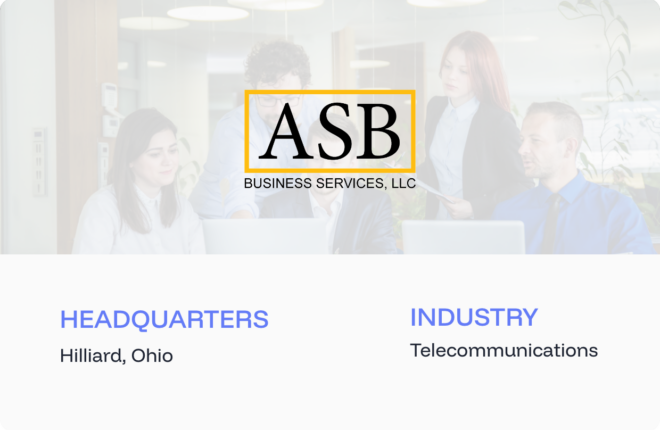You may have heard someone say 2023 is just 2022 with bangs. Raise your hand high if you agree.
Some sales teams have quickly adapted to a digital selling environment, while others have not. It’s the same every time there is a significant change in how sales get done. It was the same with email automation, social selling, and now digital selling.
If you’re still struggling to hit or increase your sales number in 2023 and want to know what the heck successful teams are doing that you’re not, here are three prospecting tools and three strategies you should implement right away.
3 Prospecting Tools to Hit Your Sales Numbers in 2023
The top three must-have prospecting tools to find, connect, and engage with potential customers in 2023 are a Sales Engagement Platform, a Contact Database/Lead Enrichment tool, and LinkedIn Sales Navigator.
These three tools work together to create a powerhouse prospecting combination. You may be using one or two of these tools already. You may have all three within your tech stack, but they’re being underutilized or just not quite what you were looking for.
This is how you should be using each.
Sales Engagement Platform (SEP)
There are a few leading Sales Engagement Platforms on the market out there, such as Outreach.io, with slightly different feature sets. But the most important things to look for in your sales engagement platform are features that make your team more efficient and help them sell smarter.
You may be thinking, “No, thank you. Not another sales tool.” But a sales engagement platform is not just for email automation. It should bring together all of your emails, calls, and social interactions into one place AND provide intelligence on what’s working in each.
The right SEP will save you time by keeping all of your prospect interactions and tasks in one place and help you hit your sales numbers by driving stronger results from the data it collects across email, calls, and social.
A few other leading tools you should look into include Salesloft, Groove, and Yesware.
Contact Database & Lead Enrichment Tool
Getting your hands on a comprehensive contact database is the best way to get accurate B2B buyer data to keep your pipeline full. Key things to keep in mind when looking for the right database are contact accuracy, intent data, and lead/data enrichment capabilities.
Contact accuracy will help you build a list of prospects within your ICP, including emails, direct dials, and mobile numbers. Tools like SalesIntel offer 95% accurate human-verified contacts, including 48M mobile numbers, and you get access to the entire database versus a competitor like Zoominfo which may have more contacts but you have to pay more for additional access.
But emails and phone numbers aren’t the only things a contact database offers. Intent data and data enrichment are also critical.
For example, intent data can narrow that massive list of 60M+ contacts to those with the right buying intent signals, so you can spend your time on prospects who are more likely to buy. Intent signals could be things like fundraising, events, and interest in specific topics and content. Depending on the signal, you can further customize your message.
Technographic data can also be useful depending on your product. For example, you could go after companies you know tend to start looking for tools like yours after purchasing tool X.
Lastly, let’s touch on data enrichment which is essential for SDRs, Sales, and Marketing. Data enrichment helps your team in two ways.
The first is forms can only capture so much information, and for conversation rates, the shorter the form, the better. A data enrichment tool allows for a smoother, faster experience for a buyer and then enriches or expands on that information for the seller (connecting their email domain to company information like size, revenue, technology, etc.)
The second is it keeps your data clean. Billions of dollars are lost every year in the U.S. because of decayed data. According to Salesforce, 70% (yes, 70%!) of data “goes bad” annually.
LinkedIn Sales Navigator
There are 740 million people on LinkedIn, but even more astounding is that 80% of B2B leads come from LinkedIn.
We mentioned earlier in this article that these three must-have prospecting tools will help you find, connect, and engage with potential customers in 2023.
A contact database helps you find prospects. A sales engagement platform connects you to prospects. And LinkedIn Sales Navigator helps you engage with prospects. (If we’re being honest, LinkedIn Sales Navigator can actually help you do all three of these things.)
LinkedIn Sales Navigator allows you to build lists, use search filters, and add contacts to your CRM or SEP. One of the most important filters you can use with this platform is “Posted in the last 30 Days,” or you can open one of your active lead lists and sort by lead news and lead shares to see who’s posted that day or week.
Use this search or view to narrow down your prospects who are the most active on LinkedIn and engage with them. Most of your prospects won’t have a ton of likes or comments, so you can be sure that you’ll stand out.
If you’re still struggling on LinkedIn or looking for an alternative, consider RevDriver. It is a free Chrome extension for accessing accurate human-verified contact data while viewing a LinkedIn Profile.
3 Strategies to Hit Your Sales Numbers in 2023
When it comes to strategies that can help you hit your sales numbers in 2023, there are quite a few directions to take depending on what you’re selling and whom you’re selling to. However, these three strategies will apply no matter what your product is.
Digital selling, keeping a pulse on the right insights, and getting comfortable crafting and creating content on LinkedIn are three strategies that will close more deals in and beyond 2023.
Digital Selling & Engagement
There has historically been a delineation between inside sales teams and outside sales teams, and the entire sales cycle was rarely a fully digital process for companies.
Even if your team pre-COVID was used to a completely digital sales process, you didn’t have to compete with the burnout buyers and executives are feeling with virtual meetings, less human interaction, and more and more emails.
Getting in front of digital selling trends like upping your pre, during, and post-meeting engagement game, building an online reputation, and using LinkedIn to its fullest are no longer optional. They’re essential.
There is an unprecedented focus problem when it comes to virtual sales meetings, and it’s up to sellers to keep prospects engaged in sales calls, tell a better story, and over-communicate throughout the process.
A few examples:
- Pre-meeting, send over relevant content around what you’re covering, such as articles or social proof. Forget the product sheet or pitch; no one’s going to read it.
- During the meeting, get out of PowerPoint presentation mode and make your conversation interactive. Such as sharing your screen and filling in key information and milestones into your presentation deck together. Or using a more visual collaboration tool like Mural.
- Post-meeting, if you haven’t already, connect on LinkedIn, engage on LinkedIn, and use LinkedIn to keep the momentum going by sharing more information or connecting with other people that need to get involved.
Crunching the Right Reports for Actual Insights
Let’s get this off our chest. Most sales teams fall into two buckets. Bucket one contains those of us who rarely look at reports and don’t pull insights from them. Bucket two are those of us who have way too many reports and don’t pull insights from them but generate and send them up the ladder because we have to.
Most reports don’t seem valuable enough to take our time away from selling, and many reports aren’t. We have to remember it’s not the numbers that matter but what we do with them.
Here are three reports you should be looking at weekly and monthly.
- Average sales cycle and conversion % by stage and by rep. These metrics are important to look at individually and as a group. Go sales stage by stage to understand if your team is booking the first meeting but is struggling to get past discovery or from trial to the proposal. Whatever the process looks like for your company. Looking at these metrics by rep will also help you to understand at which stage in the process a rep needs more digital coaching to go from being a B-player on the scoreboard to an A-player.
- Closed/Lost Reasons. Not percentage, but the actual reasons why deals are being lost. Companies are terrible at tracking why deals die in their CRM. Get your team to do this religiously for a month, and you’ll start to see common themes that you can address.
- Valuable Conversations over Activities. As with many things in life, it’s about quality over quantity. And the more emails and calls you make do not mean more deals in the pipeline if your execution is poor. Having valuable conversations with buyers takes more work upfront to personalize your pitch and determine what means most to them. Make the switch to tracking valuable conversations instead of activities, and then see what happens to your average sales cycle and conversion %.
Content that Converts Sales
Your initial reaction to this strategy may have been, “Marketing creates content. I don’t.” But you do. And if you don’t, you should – on LinkedIn.
This strategy stems from becoming a trusted resource for buyers, and the best way to do that is to get on LinkedIn and start posting and engaging.
LinkedIn has a captive audience, and it’s the right audience.
Don’t worry; you don’t have to write a 1000-word article, create cool graphics, or even use high-production videos. You just have to put your value in a few short sentences and click post.
There is a method to writing a valuable LinkedIn post. You have to write for your specific audience, understand the LinkedIn Algorithm, stay consistent, and recognize that replying to comments on your post and commenting on your prospects’ posts are also content and the key to converting sales.
Put These Prospecting Tools & Strategies to Use
You now know three ways to effectively use three prospecting tools and three new strategies to help you hit your sales numbers. Now all you have to do is go out, try a couple, try a couple more, and start hitting your sales numbers!
This digital selling environment is one of those significant shifts in sales that you don’t want to fall behind on.
About Skaled
Skaled is a top-rated management and sales consulting provider offering Sales Leadership, Operations, and Enablement expertise. Our mission is to change the way organizations sell and partner with customers.
We bring strategic and tactical talent to every engagement, driven by results and 100,000+ hours of sales leadership experience.





